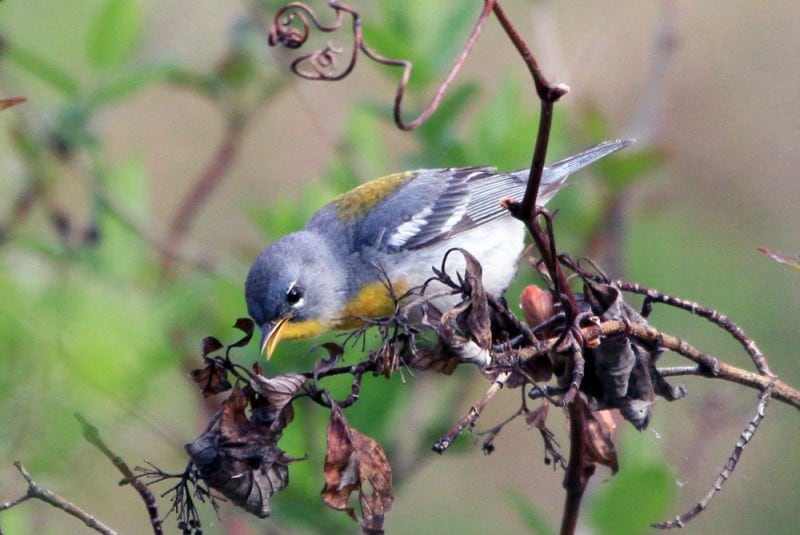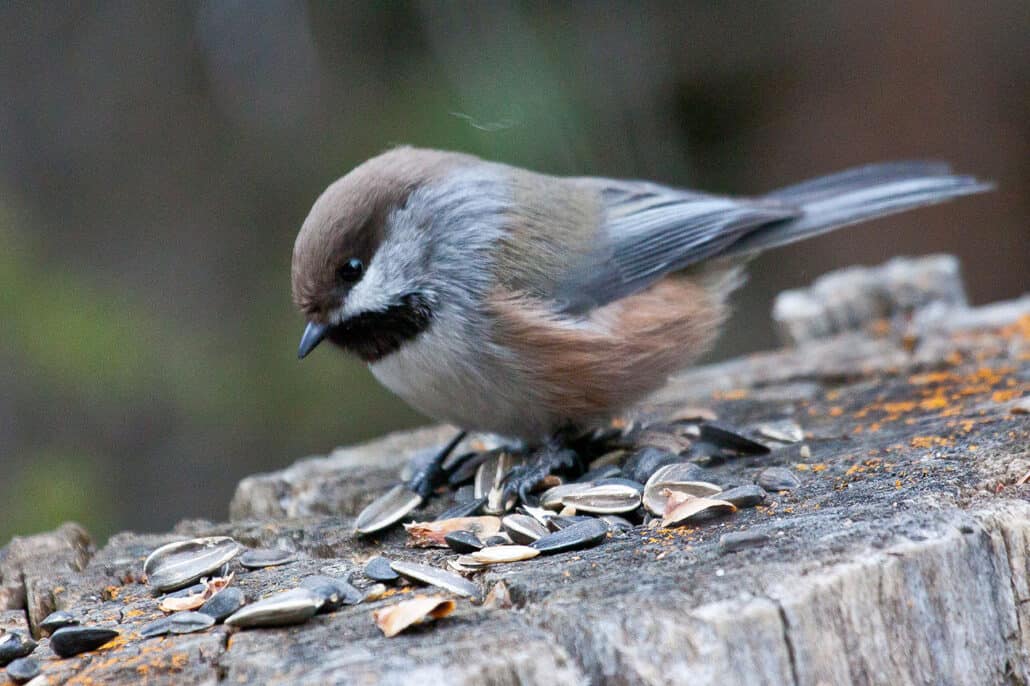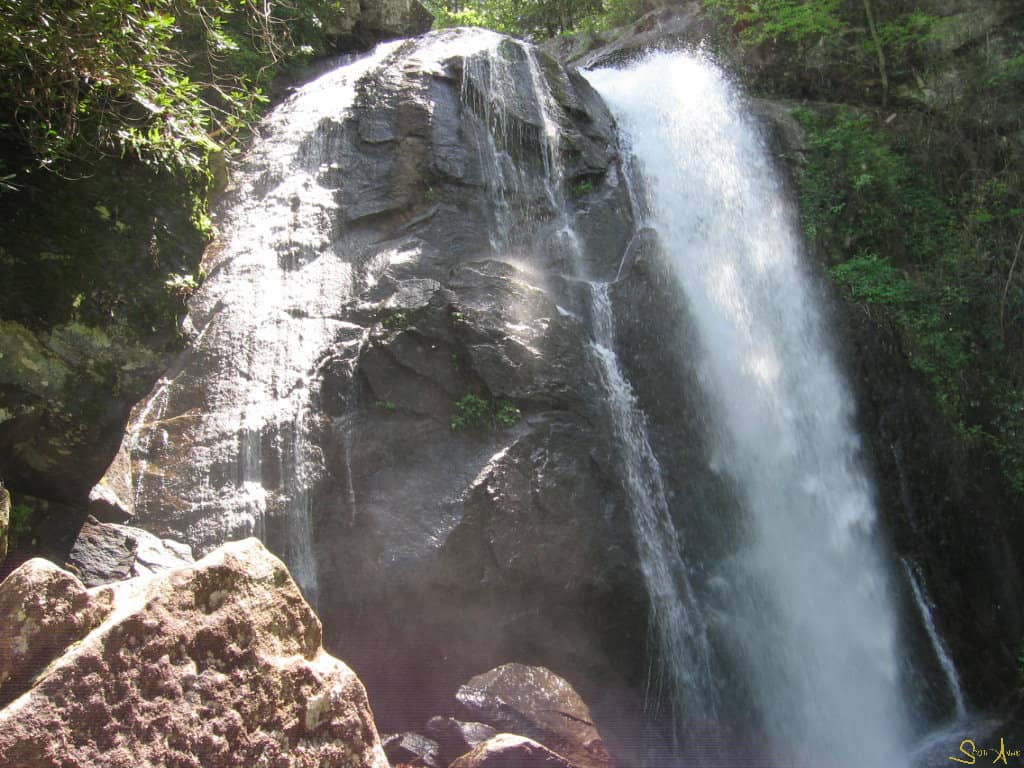Georgia has a long and rich history of bird watching and bird study. The first published reference to birds in Georgia is from 1557, an account of turkeys being provided to a Spanish expedition! The first real study of Georgia birds was made by Mark Catesby from 1722 to 1726, and published in his The Natural History of Carolina, Florida and the Bahama Islands in 1730. Many famous early naturalists of North America spent some time in or around Georgia in the late 1700s and early 1800s, including John Bartram, John Abbott, Alexander Wilson, Thomas Nuttall, John James Audubon and several of the LeContes. Many important avian discoveries were made in the late 1800s by William Brewster and Willis Worthington, and, though this practice is no longer prevalent, they documented their bird sightings by collecting (shooting) the birds.
The early and mid-1900s were marked by many local bird authorities and their discoveries. Some of the most notable of these were Eugene Odum and Thomas Burleigh in Athens (author of Georgia Birds, published in 1958 and still a useful and important work), E. E. Murphey and J. Fred Denton in Augusta, Ivan Tomkins in Savannah, Herbert Stoddard in Grady County, and Earle Greene and William Griffin in Atlanta. All of these men published important information about their areas or about Georgia as a whole. This list is by no means complete or even close to it!
The Georgia Ornithological Society (GOS) was founded in Atlanta in 1936, and became a way for the many local bird clubs to connect with each other. The GOS began publishing the official journal of Georgia ornithology, The Oriole, which is still published today. The GOS also started publishing many regional bird publications, most of which are still highly useful, and in 1945 published the “Birds of Georgia.” The 6th edition of this book came out in 2003 and is now titled the “Annotated Checklist of Georgia Birds.” This publication is recommended for any student of Georgia’s birds.
The sheer size of Georgia makes it difficult to see all of it (it’s the largest state east of the Mississippi River), and it has among the highest number of eco-regions and attendant bird species of any eastern state. From mountains in the Blue Ridge through the rolling hills and large rivers of the Piedmont and swamps of the Coastal Plain to the Atlantic Coast, you can find many different bird species at any one time, and over the course of a year or several years see many more species, all within the confines of our state.
In Georgia there are species with very northern ranges in North America passing through as migrants, breeding in the Blue Ridge, or spending their winter in Georgia. Some of these include ruffed grouse, golden-winged and cerulean warblers, red crossbill, and pine siskin. In the southern sections of Georgia many species with more southern distribution can be found, especially in summer, species like Mississippi and swallow-tailed kites, chuck-will’s-widow and Swainson’s warbler. The Georgia coast always has some species of shorebirds, gulls and terns, no matter what season, and offshore species as well. In short, Georgia is in a perfect position to see just about all the species that can be found in eastern North America!
Another reason that Georgia is great for birding is the thrill it offers warbler and other colorful landbird migrant lovers. Those eastern species that migrate south for the winter use several different paths to get south in fall and then return in spring. The two most often used paths are called “trans-gulf” and “Florida/West Indies.” Those using the trans-gulf route in fall follow the Appalachian Mountains south, head right through west-central Georgia, and then take off from the Gulf Coast between Tallahassee and Houston to hit Central or South America for the winter.
In spring they funnel up Central America and take off from the Yucatan Peninsula, landing on the Gulf Coast in the same swath mentioned above to come right back up through west-central Georgia. At the same time, the Florida/West Indies migrants come down the Atlantic coast in fall, along the Georgia coast, to continue south through Florida to the West Indies and beyond. In spring, they come back up the Florida peninsula and when they hit the Georgia border they scatter inland as well as up the coast heading to their breeding grounds. Lucky birders in Georgia get to see them going both ways!
There are a few things to keep in mind throughout the year to maximize the species of birds you can find and enjoy. Take advantage of the birds that are most common, when they are most common, and where they are most common. This sounds simple, and it is. Looking at maps in bird books such as this one or bird guides, figure out if the species you are looking for is a summer bird, a winter bird, or a during migration bird. For example, the common moorhen lives in Georgia all year, but is much more common in summer. It is also much more common in the coastal plain, so look for it there in summer in a watery location.
If you want to see the winter wren, that little brown dynamo, look for it in winter in a wooded location near a stream in the piedmont. The great-crested flycatcher is only here in summer—look for them then, and remember that you will often hear their explosive wheep! call before you see them. A book such as “Birding Georgia” has bar graphs which give a pictorial representation of exactly when each species can be found in each part of the state and can really help you plan your trips to find species of interest.
Many birders think of warblers and tanagers when they think of “migration,” but all the species that come here for the winter are also migrants. Ducks, shorebirds, and sparrows are also migrants, and thousands of them may pass through during their migration. The beautiful and stately sandhill cranes, migrants as well, practically fly right down I-75 for their brief winter stop, and once you see or hear a flock of these huge gray birds bugling overhead you’ll never forget it!
One of the great things about bird watching is that you can enjoy it anywhere, at any time, and all you really need are a pair of binoculars and open eyes! However, there are quite a few things you can do to increase your enjoyment and success on bird trips, especially for trips away from your local area. Here are a few suggestions for optimizing your enjoyment of Georgia birds.
- Be prepared for any type of weather! Always have layers of clothing and some type of rain or sun protection, including a hat.
- Try to do a little research about where you are going. This includes maps and directions, what birds to look for and where, and any tips for the specific place you are going. Check out bird-finding guides or site guides for this kind of information, much of which may be available on-line (especially maps). If you have certain birds you hope to see, check bar graphs for the best time of year and part of the state.
- Depending on the season, be prepared for animals and insects that might hamper your enjoyment of the outdoors. You are very unlikely to ever see a poisonous snake, but always watch where you are walking and where you put your hands. Be especially careful around water below the fall line for cottonmouths and bunchgrass on barrier islands above the high tide line for eastern diamondback rattlesnakes. However, you are really unlikely to see either species. For bugs, take along repellant if you know that flies and mosquitoes find you tasty. This isn’t much of a problem in winter but in summer there can be some fearsome biting bugs in Georgia! You haven’t lived until you have been on the coast when the sand gnats are out in force…
- Ticks are other pests to avoid. Follow the standard tick-prevention techniques like wearing light-colored clothing, tucking your pants into your socks, or spraying tick repellant on your clothing may help. Finally, you need to be careful about chiggers and fire ants. Chiggers aren’t actually harmful, but they burrow under your skin and cause red itchy welts that may take several days to go away, so it’s best to avoid them. They are found in grass, the taller the better, and if the grass is in a field with grazing animals that is chigger nirvana. Stay away from the tall or taller grassy areas and do not sit or lie down in grass. Other ground surfaces may have them also, such as pine needles, but grass is the worst. You will only do this once! In avoiding fire ants, the thing to be aware of is how the ground feels. As you are walking along a field or pond edge, for example, if the ground where your foot just landed feels soft, immediately look down and see if you just stepped in an ant hill. If you did, move a few feet away quickly, because they will come streaming out of the hill to bite your legs in an attempt to drive away the “intruder” (your boot). One bite is no big deal, but if you just stand there you might get dozens.
This part of our website is intended as a starting point for your enjoyment of Georgia’s birds, so it will only give you the foundation blocks to build on. In order to enhance your understanding and appreciation of the bird in Georgia, there are many things you can do to “spread your wings” beyond the limits of this site. These fall into several generally distinct categories, and the most important are bird identification, bird finding (you could call this “location identification”!) and location finding. Continue browsing our Georgia pages to learn more.




